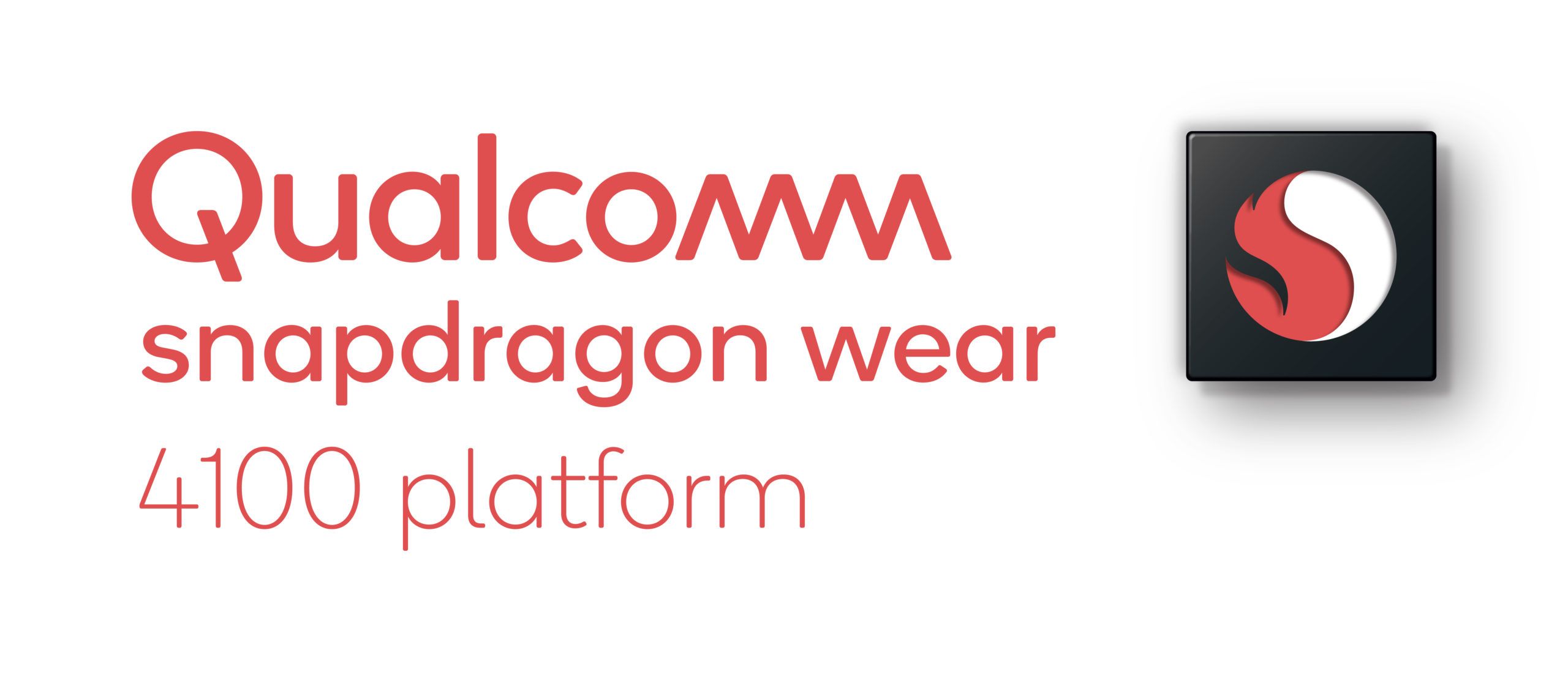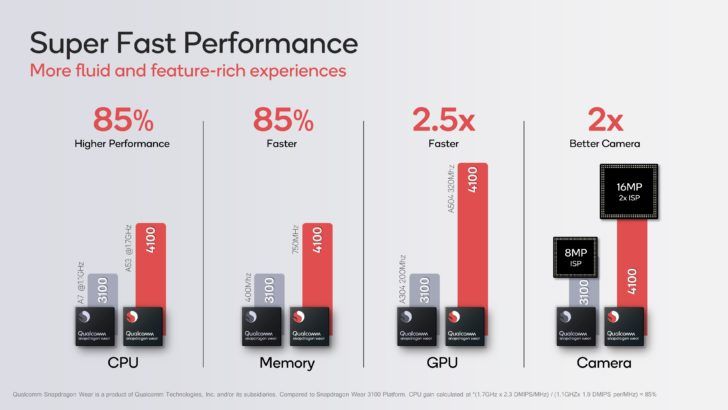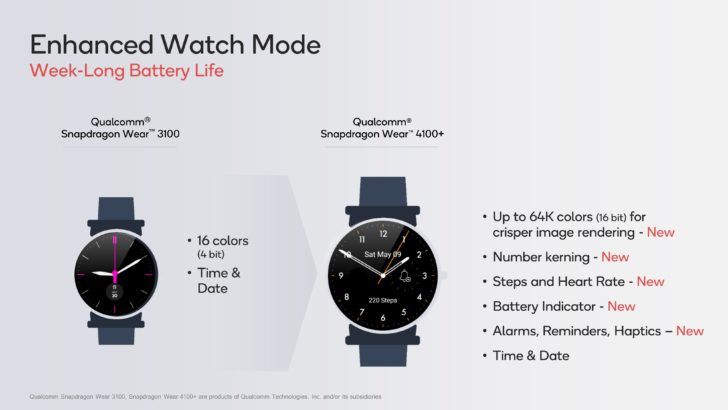Google's Wear OS platform for smartwatches has been in a rough patch for a while, partially because the only viable option for processors has been Qualcomm's Snapdragon Wear 2100 and 3100 chips. Those processors are vastly out of date, but now Qualcomm is introducing a massive upgrade — the Wear 4100 series.
Qualcomm revealed two new System-on-a-Chip platforms for wearables today, the Snapdragon Wear 4100 and the Wear 4100+. Both are built on a 12 nanometer architecture, a significant upgrade from the 28nm design on the company's existing Wear 3100 platform.
WEAR 4100+ SPECS
|
Main Processor |
1 |
|
Co-Processor |
Cortex M0, ~ |
|
GPU |
|
|
DSP |
|
|
RAM |
, |
|
Display |
Up to 1080p @ 30FPS |
|
Connectivity |
Bluetooth 5.0, Bluetooth 4.2, 8, Qualcomm Location technology, USB 2.0, NFC, |
|
Modem |
|
|
Supported operating systems |
AOSP, Wear OS by Google |
The first key improvement on the 4100+ is, thankfully, performance. Google's Wear OS platform has always been starved for power, especially as newer versions of its Android core outpace the aging wearable chipsets, but the 4100+ uses a quad-core ARM Cortex A53 CPU that operates at up to 1.7 GHz. Qualcomm says this allows the 4100+ to be up to 85% faster than the Snapdragon Wear 3100.
Next, Qualcomm has improved the low-power co-processor from the Wear 3100. "The AON Co-processor now supports up to 64K colors," the company wrote, "and extends offload experiences to include continuous heart rate monitoring, faster tilt-to-wake responsiveness, steps, alarms, timers, and haptics." This means the main CPU won't have to handle some functions, though it remains to be seen how Wear OS will implement it. The co-processor isn't present on the lower-end Wear 4100, only on the plus model.
Other key changes in the Wear 4100+ include an improved LTE modem (no 5G support for now), support for up to two cameras (Galaxy Gear, anyone?), and Bluetooth 5.0. The upgraded Ambient Mode will especially benefit Wear OS, as it will allow for watchfaces to maintain their color and complications while the watch is 'asleep'.
Thankfully, we won't have to wait long for watches powered by the new processors to show up. Imoo is developing an Android watch (not Wear OS) for children with dual cameras and LTE support, which should arrive sometime this year. Mobvoi, the company behind the TicWatch product line, will be the first to build a Wear OS watch with the new chipset. However, both products will use the base Wear 4100 without the co-processor, not the 4100+.
Google's long-term plans for Wear OS are still ambiguous, but with Qualcomm's new chips, the platform is finally receiving the hardware upgrade it so desperately needed.



